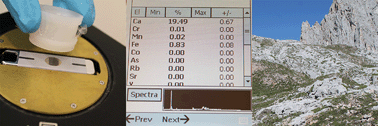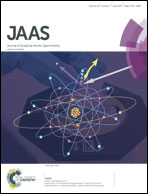Application of handheld energy-dispersive X-ray fluorescence spectrometry to carbonate studies: opportunities and challenges
Abstract
Technology development over the last few years has led to significant improvements in the quality and flexibility of portable instruments. Notably, handheld energy-dispersive X-ray fluorescence (ED-XRF) spectrometry has seen a bloom both in terms of technical development and applications, ranging from the field of mineral exploration to archaeology, environmental science, paleoclimatology and forensic science. However, the field of carbonate geoscience has not yet taken the capability and flexibility of this tool to its advantage. This study developed a methodology for the application of handheld XRF to carbonate studies. An assessment was made in terms of measurement time, sample preparation and weathering of outcrops. Correction equations are presented for elemental concentrations of Ca, Ti, Fe, Mn, Zn, Al, K, Mg, Ba, Sr, Rb and Si that were derived from calibration based on a series of carbonate lab standards. Weathering can pose a significant challenge for in situ measurements of carbonate outcrops, since weathering impacts on the concentrations of Ca, Mg, Ti and Al in carbonate rocks. Therefore, we advise that XRF be used on fresh rock chips that are hammered from carbonate outcrops to take advantage of making measurements in situ and at the same time ensuring reliable quantitative results. This method allows rapid and inexpensive geochemical characterization of carbonate, which opens opportunities for stratigraphic, sedimentological, paleoenvironmental and diagenetic studies in extensive study areas.


 Please wait while we load your content...
Please wait while we load your content...